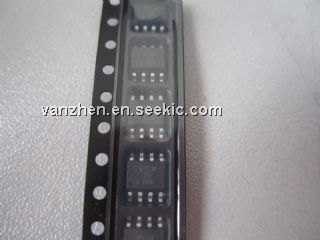Product Summary
The QT113B (QT113B) charge-transfer (QT?) touch sensor is a self-contained digital IC capable of detecting nearproximity
or touch. It will project a proximity sense field through air, and any dielectric like glass, plastic, stone,
ceramic, and most kinds of wood. It can also turn small metal-bearing objects into intrinsic sensors, making them
responsive to proximity or touch. This capability coupled with its ability to self calibrate continuously can lead to
entirely new product concepts.
It is designed specifically for human interfaces, like control panels, appliances, toys, lighting controls, or anywhere a
mechanical switch or button may be found; it may also be used for some material sensing and control applications
provided that the presence duration of objects does not exceed the recalibration timeout interval.
Power consumption is only 600 mA in most applications. In most cases the power supply need only be minimally
regulated, for example by Zener diodes or an inexpensive 3-terminal regulator. The QT113B requires only a
common inexpensive capacitor in order to function.
The QT113B RISC core employs signal processing techniques pioneered by Atmel. These are specifically designed
to make the device survive real-world challenges, such as stuck sensor conditions and signal drift.
The option-selectable toggle mode permits on/off touch control, for example for light switch replacement. The Atmelpioneered
HeartBeat signal is also included, allowing a microcontroller to monitor the health of the QT113B
continuously, if desired. By using the charge transfer principle, the IC delivers a level of performance clearly superior
to older technologies in a highly cost-effective package.
The QT113B is a drop-in replacement for the QT113. The only circuit change required might be the use of a smaller
value CS capacitor. A reduction by a factor of 2 is often required, but some experimentation is necessary to ascertain
the correct value of CS.
Features
? Number of Keys:
? One
? Configurable as either a single key or a proximity sensor
? Economy:
? Less expensive than many mechanical switches
? Only one external part required – a low-cost capacitor
? Signal processing:
? Consensus filter for noise immunity
? Sensitivity easily adjusted
? 100% autocal for life – no adjustments required
? 10 s, 60 s, infinite auto-recal timeouts (strap options)
? Toggle mode for on/off control (strap option)
? Interface:
? Digital output, active high
? Moisture tolerance:
? Increased moisture tolerance based on hardware design and firmware tuning
? Power:
? 2.5 V to 5 V, 600 μA single supply operation
? Package:
? 8-pin SOIC
? Applications:
? Light switches, appliance control, access systems, elevator buttons, proximity
sensor applications, security systems, pointing devices, consumer devices,
mechanical switch or button
? Patents:
? QTouch? (patented charge-transfer meth
 (Hong Kong)
(Hong Kong)







